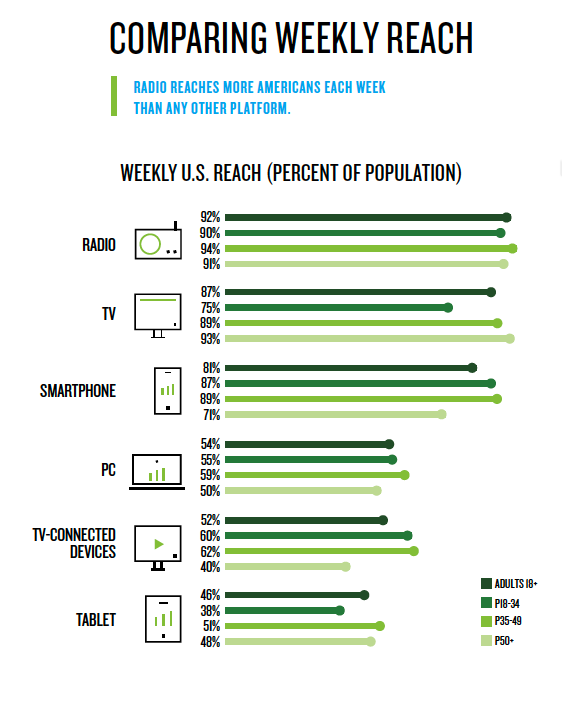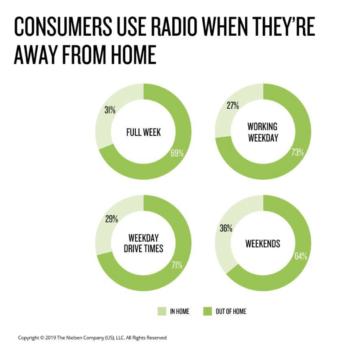Despite increasing media and platform diversification, the numbers are still looking good for radio, according to Nielsen in its report “Audio Today 2019.”
Released this week and subtitled “How America Listens,” the report presents an optimistic and surprisingly steady picture for broadcasters.

In the introduction, Nielsen Audio Managing Director Brad Kelly calls terrestrial radio “the original electronic media” and “the load-bearing wall in audio’s house.” However, Kelly highlights radio’s dominance in the dashboard as a crucial element of radio’s “continued success and resiliency.”
Among its findings:
Commute listening strongly drives radio use during the week, peaking for adults around the beginning and end of the work day (8 a.m. and 5 p.m.), and for teens and the open and close of school (7 a.m. and 3 p.m.). On weekends, both adults and teenagers tend to listen more in the middle of the day, presumably while running errands or traveling to activities.
Although the report says only 64% of radio listening on Saturday and Sunday is done while out of the home, 79% of that out-of-home weekend listening is done in the car. Compare that with the nearly three-quarters of listeners who tune in during the workday (35% listen during the day) or weekday commutes (71% listen in the car).
These numbers are a good reminder why OTA radio’s future position in the auto is already a source of angst for industry prognosticators, who see the digital dash as a potential threat.
[Related story: Nielsen: “Diverse Audiences Are Big With Radio”]
But back to the good news.
 Among adults (considered 18 and older by Nielsen), radio still dominates in both monthly and weekly reach. On the monthly end, radio use was followed somewhat closely by live/DVR television, then trailed by smartphone apps/web access. User interactions with computers, tablets and other internet-connected devices offered no real challenge.
Among adults (considered 18 and older by Nielsen), radio still dominates in both monthly and weekly reach. On the monthly end, radio use was followed somewhat closely by live/DVR television, then trailed by smartphone apps/web access. User interactions with computers, tablets and other internet-connected devices offered no real challenge.
For more granularity, 92% of the adult U.S. population listens to radio on a weekly basis. Only 87% claim the same for television. Interestingly, the 35-49 demographic had the highest percentage of radio listeners at 94%, while the 18-34 age group was the least heavy traditional TV watchers at 75%. Smartphones, TV-connected devices and tablets all appear to be on the upswing, but are no real challenges for radio or television as of 2019.











